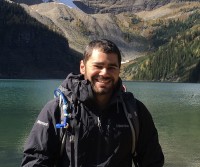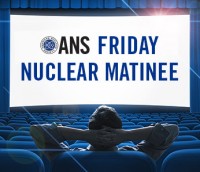Where does the energy come from?
Right now, the energy is coming from two places: the sun, and fossil fuels. The current system has a lot of steps, takes up a lot of land and natural resources, and results in a lot of waste. The fact that cow dung is used as fuel in many countries around the world tells us that not all of the energy going into the cows (feed) gets turned in to calories (edible meat). There is pollution from pesticides, and pollution from the fossil fuels required in the process. But we can do better.
A Better Way
The steps outlined above focus on a central theme: energy. Everything in life requires energy. But as science improves, we are getting better at using energy directly towards the end product. For example, hydroponic plant growth removes the soil, eliminating the need for pesticides, tractors, and rain.
But what about meat? Over the past few decades, significant research has been conducted around the direct growth of meat. By directly inputting energy into meat production, steps are eliminated, and energy is saved.
Getting Energized
Despite the decrease in energy requirements, we still have to get the energy from somewhere. Traditionally, we burn fossil fuels like coal, natural gas, and gasoline. However, the combustion process produces emissions that can be harmful to the environment, and to human health. We can harvest energy from the sun. Unfortunately, there are some problems with that, too. The sun doesn't shine for 24 hours a day, and it's relatively hard to harness that energy. However, another option exists, and it produces over ten percent of the world's electricity, and almost 20% for the United States: Nuclear Power1. Nuclear plants generally use Uranium, a relatively easy-to-get element with an amazing energy density; one kilogram of uranium contains eighty-four thousand (!!!) times as much energy as the same mass of gasoline. That means that while a kilogram of gasoline will allow you to drive around 20 kilometers, the same amount of uranium would get you to the moon and back. Twice.
The world is changing. More people means we need more food, which requires ever-increasing amounts of energy. As food-production technologies change, there will be more need for electricity, and specifically, electricity that can be produced without pollution or significant environmental damage. While no single technology can provide all the electricity and energy we need, nuclear power will be needed to provide the backbone to our new energy economy.
Table 1. Energy Density (from Energy Education - Energy Density)2
Wood - 16 MJ/kg
Coal - 24 MJ/kg
Gasoline - 46.4 MJ/kg
Uranium Fission - 3,900,000 MJ/kg
References:
- Energy Density. (n.d.) In Energy Education. Calgary: University of Calgary. Retrieved May, 2018, from http://energyeducation.ca/encyclopedia/Energy_density
- Electrical Generation. (n.d.). In Energy Education. Calgary: University of Calgary. . Retrieved May, 2018, from http://energyeducation.ca/encyclopedia/Electrical_generation
 James Jenden is an energy systems scientist living in Calgary, Canada. He enjoys studying how different aspects of our energy production and consumption fit together, and how optimizing these systems can improve quality of life, and decrease humanity's negative effects on the environment. In his spare time, James enjoys backpacking, cycling, softball, and rock climbing.
James Jenden is an energy systems scientist living in Calgary, Canada. He enjoys studying how different aspects of our energy production and consumption fit together, and how optimizing these systems can improve quality of life, and decrease humanity's negative effects on the environment. In his spare time, James enjoys backpacking, cycling, softball, and rock climbing.



 James Jenden is an energy systems scientist living in Calgary, Canada. He enjoys studying how different aspects of our energy production and consumption fit together, and how optimizing these systems can improve quality of life, and decrease humanity's negative effects on the environment. In his spare time, James enjoys backpacking, cycling, softball, and rock climbing.
James Jenden is an energy systems scientist living in Calgary, Canada. He enjoys studying how different aspects of our energy production and consumption fit together, and how optimizing these systems can improve quality of life, and decrease humanity's negative effects on the environment. In his spare time, James enjoys backpacking, cycling, softball, and rock climbing.